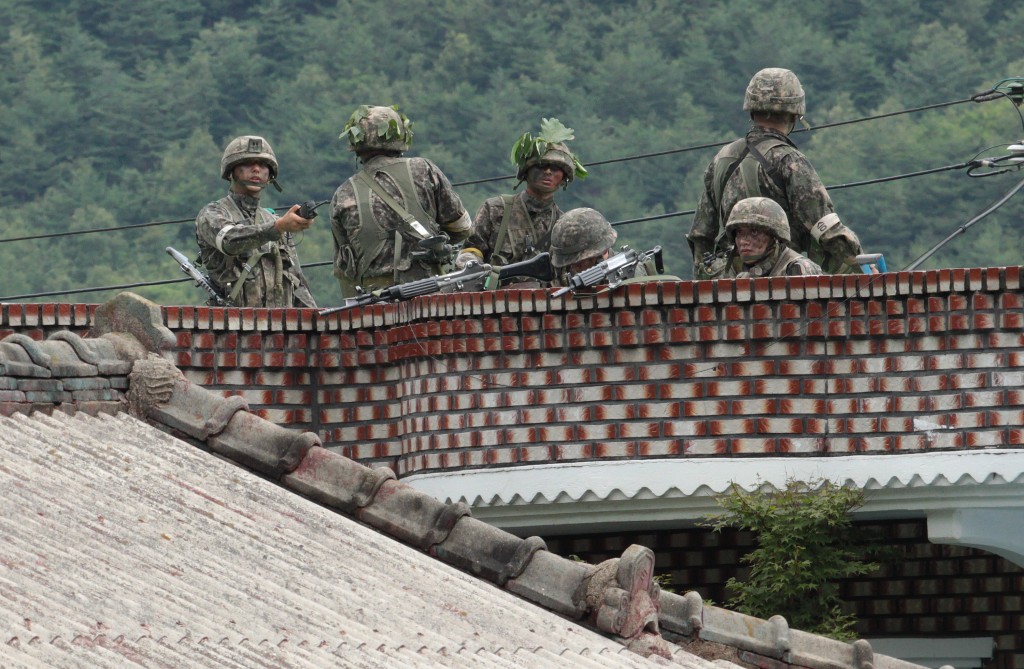- California Assembly OKs highest minimum wage in nation
- S. Korea unveils first graphic cigarette warnings
- US joins with South Korea, Japan in bid to deter North Korea
- LPGA golfer Chun In-gee finally back in action
- S. Korea won’t be top seed in final World Cup qualification round
- US men’s soccer misses 2nd straight Olympics
- US back on track in qualifying with 4-0 win over Guatemala
- High-intensity workout injuries spawn cottage industry
- CDC expands range of Zika mosquitoes into parts of Northeast
- Who knew? ‘The Walking Dead’ is helping families connect
S. Korea to raise defense spending by $8 billion to defend against North
SEOUL (Yonhap) — South Korea said Monday it will sharply raise the defense budget over the next five years to beef up its capabilities against North Korea’s nuclear and missile programs.
The budget injection of 8.7 trillion won, or about $8.03 billion, is based on the assessment that Pyongyang is believed to have reached a “significant” point in efforts to master the technology to miniaturize nuclear warheads that fit atop missiles.
It is part of the ministry’s budget plan for the 2016-2020 fiscal period, which calls for 232.5 trillion won ($218.8 billion) in total, a 7 percent increase on average during the cited period compared to its 2015-2019 version.
While costs for maintaining troops are set at 155.2 trillion won ($143.27 billion) and the rest will be for the improvement of military capabilities, the government, specifically, is to invest 6 trillion won ($5.54 billion) in building the country’s preemptive strike apparatus, the Kill Chain, and 2.7 trillion won ($2.49 billion) into the development of the low-tier air defense program, the Korean Air and Missile Defense (KAMD) system, over the next five years.
The aggregate amount is 700 billion won ($646 million) more than the budget plan stated in the 2015-2019 period, which reflects Seoul’s will to ensure a stronger deterrence against the belligerent North.
Key assets for the Kill Chain incorporate multi-purpose satellites, Global Hawk unmanned aircraft and Taurus missiles. The KAMD system includes patriot interceptors and mid-range surface-to-air missiles, or M-SAM.
As part of efforts to effectively cope with North Korea’s local provocations and to prepare for all-out war with the enemy, Seoul plans to spend 1.8 trillion won ($1.66 billion) on acquiring surveillance systems such as unmanned aerial vehicles and detection radars.
In the face of the North’s growing security threats online, South Korea plans to earmark 100 billion won ($92.3 million) to build a multi-layer protection system and to create a mock training field.
“The mid-term budget plan also focuses on improving circumstances at the barracks and increasing monthly payments to enlistees by more than double,” a ministry official said. “We also aim to augment the investment in research and development from the current 6.5 percent of the total defense budget to 8.4 percent by 2020 to further promote defense fields.”
















